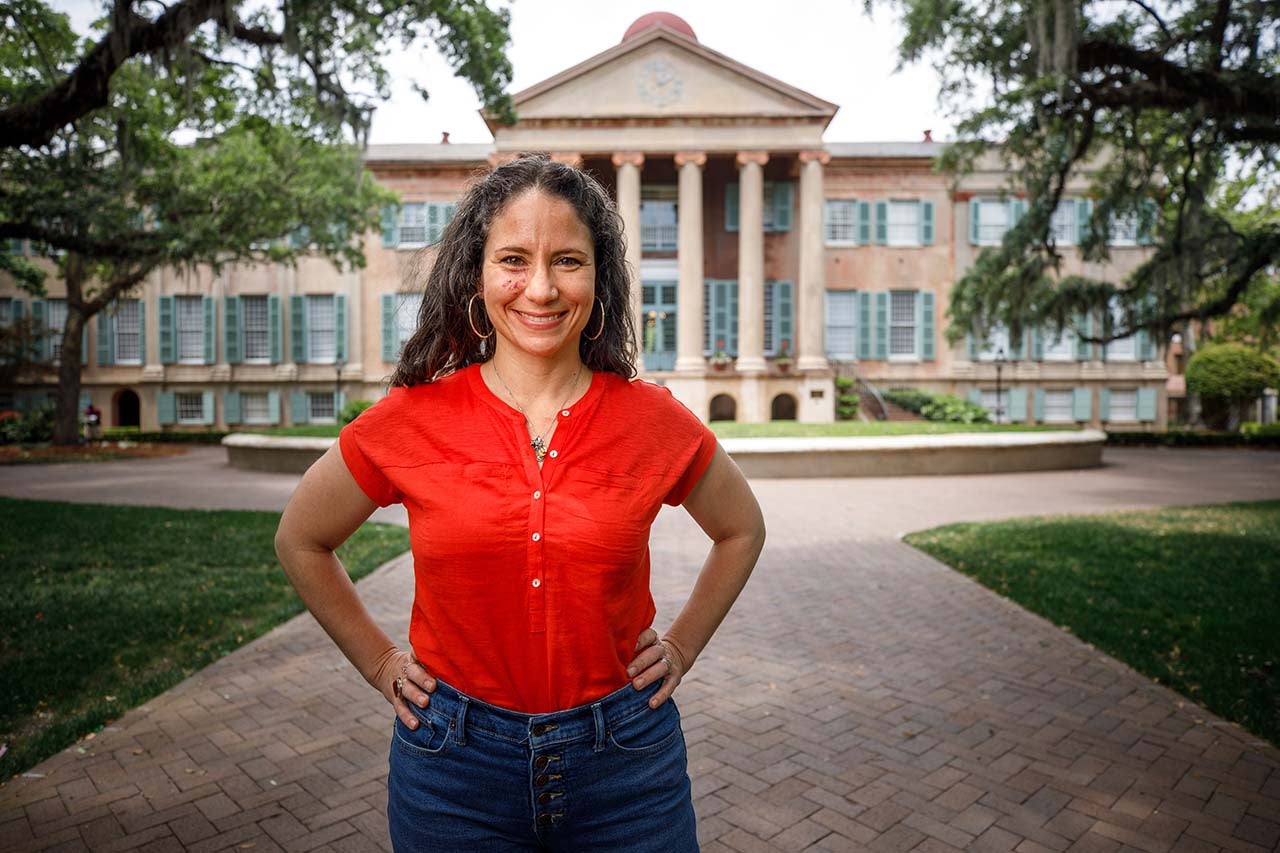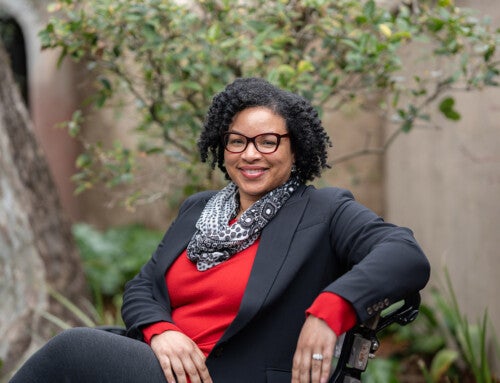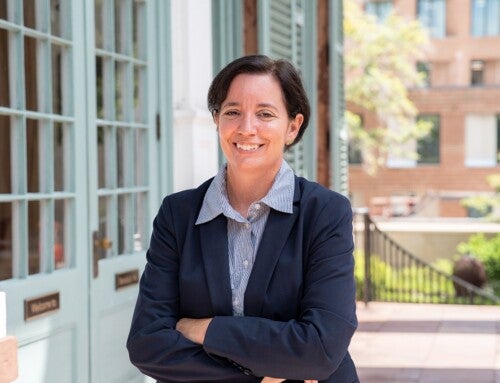Name: Christina García
Hometown: Miami, Florida, where the finest Spanglish is spoken and “Dale, bro” is a call to meet your full potential, or just hurry up and get out of the way
Education: B.A. in English and art history from Florida International University; M.A. in humanities and social thought from New York University; Ph.D. in Spanish and Portuguese from University of California, Irvine
Job title: Assistant Professor of Spanish
How long have you worked at the College? 3 years
What are your job responsibilities? As a professor for the Department of Hispanic Studies, I teach everything from Basic Language to upper division classes in literature and cultural studies. I am also affiliate faculty for the Program in Latin American and Caribbean Studies and the African American Studies Program. In my classes, as in my research, we look at the body and the environment in the work of modern and contemporary hispanophone Caribbean writers and artists. In so doing, we engage Caribbean cultural production at the intersection of the environment, race, gender and sexuality instead of treating any one of these issues exclusively. Questioning the boundaries of the human and trying to adopt non-human perspectives is also one of our goals.
Outside of the class, I am a co-faculty adviser for the Hispanic Latino Club. This year I will be filling in for Dr. Lauren Ravalico as director of Adelante!, the LCWA iteration of the mentorship program Crossing the Cistern, and I will also serve on the advisory board to the Halsey Institute of Contemporary Art.
What do you like most about your job? Students! I love dialoguing and mentoring students! I especially enjoy the part where reading or analyzing a work of art brings us to reconsider long-held assumptions and view the world from a slightly different perspective.
What question do you get asked most in your job and what’s your typical answer? Rather than a question, I get the comment, “I don’t understand what this text/image is about.” When we are confronted with something new or confusing, we tend to want to make it familiar. I try to teach my students that it’s OK not to understand a short story or the plot of a novel, that sitting with the discomfort of not understanding can make us attuned to other things, like patterns, rhythms, textures, types of metaphors. I then ask them to identify and describe why a particular text is confusing, and when they’ve done so, show them that they’ve already started the work of analysis and criticism.
What’s your favorite location on campus and why? Glebe Street because it’s lined with beautiful Charlestonian houses and trees; it’s quiet and less busy.
What are your hobbies? Yoga, hosting, going dancing, reading for leisure, traveling, petting cats, cat photography, cat philosophy … I have two cats ;)
What personal and/or professional accomplishment are you most proud of? Getting students to not only think critically but creatively and empathetically. When I see that students are excited by a cultural work and make connections between that work and something else that might seem unrelated, maybe it’s something they learned in another class or a school of thought, that excitement and those connections are what I am most proud of.
Name a creative work (book, movie, performance, etc.) you enjoyed recently and why? The Halsey recently hosted a talk with the Peruvian artist Kukuli Velarde, whose work will be on exhibit next spring. Holy cow, I was blown away. Her work combines the aesthetics and iconographies of Andean and European modes of representation. Her ceramic pieces and large-scale paintings not only evoke the transculturation so characteristic of the Americas, but they challenge the legacy of colonialism and conventions of gender.
What was your favorite TV show growing up? Reruns of Laverne and Shirley and Welcome Back, Kotter
What’s next on your bucket list? I want to understand more science so I can make more connections to it within the humanities. The little bit I have read about quantum physics reminds me of magical realism.
What is something your campus colleagues would be surprised to know about you? In addition to fantasizing about being cloistered in a monastery where everyone takes a vow of silence and I can devote myself exclusively to my scholarship, I am also a club kid. The late ’90s were formative years for me, spent with drag queens in underground electronic dance music clubs of South Beach (before it became Disneyfied). Whenever I go back home, pre- and eventually post-pandemic, I will reunite with my soulful house–loving friends and we will get sweaty on the dance floor.
What was your first job? Selling sneakers at the Athlete’s Foot when I was 16.
What’s your favorite Lowcountry restaurant? I don’t have a favorite restaurant so much as a favorite Lowcountry dish: shrimp and grits. I have learned that no two plates of shrimp and grits are alike. Ordering it is an adventure; it’s always different and I’m rarely disappointed.
Describe your perfect day: I wake up really early before anyone else at home. I read and write. Make coffee. Later I wake up my stepdaughter and my son. My son is 1.5 and, so far, really loves books. Maybe he just likes the sensation of flipping the pages. On this perfect day we read a couple books, have breakfast and go for a long walk. Then everyone takes a three-hour nap.
To nominate a faculty or staff member to be featured in the “CofC Faces to Know” series, please send the person’s name and email address to [email protected]. Please include “CofC Faces to Know” in the email subject line.




